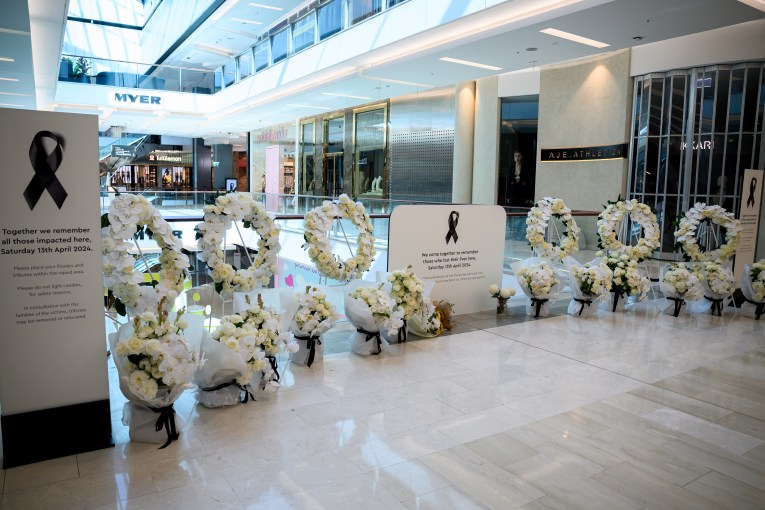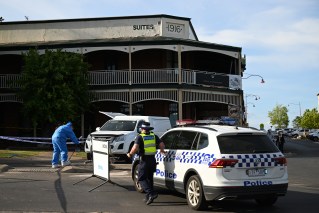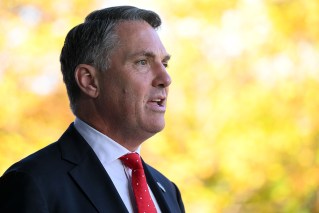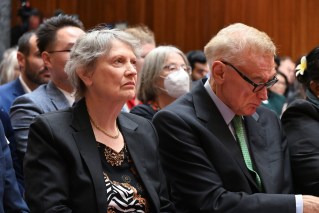Health Minister Greg Hunt has rubbished suggestions that AstraZeneca’s COVID-19 vaccine may be insufficient to achieve herd immunity in Australia, claiming critics were “clearly incorrect”.
Mr Hunt has also reassured Australians that hospitals, GPs and health clinics will be able to handle the mammoth task of vaccinating millions of people within months and potentially up to 100,000 per day.
The Oxford University and AstraZeneca vaccine is the largest part of Australia’s vaccine program, with 54 million doses locked in.
According to one December study in The Lancet medical journal, the vaccine has a 62 per cent efficacy rate among people given two standard doses.
An efficacy of 90 per cent was recorded in a smaller group, who were given one small dose and one standard dose.
Chief medical officer Professor Paul Kelly described the study as “interim data” and said the Therapeutic Goods Administration would receive far more “fulsome” results from AstraZeneca before the vaccine was approved.

Australia has 54 million doses of Oxford University’s coronavirus vaccine. Photo: Getty
But Mr Hunt said it would be an effective vaccine.
“It’s important to note that the results also show up to 90 per cent effectiveness more generally with final results to come on AstraZeneca, and up to 100 per cent in relation to the severe illness,” Mr Hunt said on Tuesday.
Professor Raina MacIntyre, head of the biosecurity program at the Kirby Institute at the University of NSW, said last week that the AstraZeneca vaccine may protect “against death and hospitalisation, but may not protect well against infection”.
“I do not believe the AstraZeneca vaccine – based on published phase 3 trial results – will be efficacious enough for herd immunity,” she said.
Mr Hunt did not mention any names specifically, but criticised “commentators” at several points in his press conference.
“I know there are differing views. There are some widely quoted commentators who may have predicted 400,000 lives lost, and that was clearly incorrect, and yet they’re still widely quoted by the press,” he said.
“So there will be different views from many people. Our advice comes from what I believe are the best medical advisers in the world.”
The target: 100,000 jabs a day
Mr Hunt said general practitioners would be invited to register to deliver COVID vaccines from Phase 2 of the rollout, when more of the general public begins getting jabs.
Phase 1, for priority groups like high-risk workers and the elderly, will be administered through special “hubs” at selected hospitals.
Phase 1 will likely include the Pfizer vaccine, which needs to be stored at very low temperatures.
The AstraZeneca vaccine, which is easier to store, will be included in Phase 2.
Prime Minister Scott Morrison said last week that Australia planned to vaccinate four million people by the end of March – some six weeks after the beginning of the vaccine rollout in “mid to late February”.

Some 100,000 people would need vaccinations each day to hit government targets. Photo: Getty
Inoculating four million people in six weeks would involve administering an average of 95,238 jabs every day.
In reality, far more than that would have to be vaccinated on some days, as the government said the first target was just 80,000 vaccinations over the first week.
The New Daily asked Mr Hunt exactly how many Australians he hoped would be vaccinated by the end of October, the date by which he previously said he expected “Australians will be fully vaccinated”.
Mr Hunt wouldn’t cite a specific number, only saying “we’d like to see as many Australians as possible be vaccinated”.
But to achieve ‘herd immunity’, Professor MacIntyre said it would require at least 66 per cent of the population to be immunised with an effective COVID vaccine.
That amounts to roughly 17 million Australians, which would require about 100,000 vaccines each day between mid-February and the end of October.
Nevertheless, Mr Hunt said he had confidence in Australia’s health networks to meet the huge task.
“We actually have a network which produced 17 million vaccinations last year,” he said in response to TND‘s questions.
“We can do this because we did it last year and we did it the year before.”

The government’s vaccine roadmap. Photo: Department of Health
The minister said “state-based vaccination clinics, the Commonwealth vaccination clinics, the Aboriginal community-controlled health organisations and the hospitals” would be involved in giving jabs.
Dr Karen Price, president of the Royal Australian College of General Practitioners, said it would be “the largest vaccination program in recent history”.
“Australia has historically and previously achieved around a 92 per cent immunisation coverage and I see no reason for that to change with this COVID vaccination program,” she said.
Mr Hunt also shrugged off questions about debunked claims shared by fellow Liberal MP Craig Kelly, who has made numerous dubious claims regarding COVID around face masks and virus treatments.
“I may disagree with people, but my job is to set out our advice. And our advice is that the vaccines that our medical regulators have chosen will keep Australians safe,” he said.
“We follow the advice of the medical advisers. And many people, as I’ve just said, will put out differing views. Many of those views have been shown to be wrong.”









